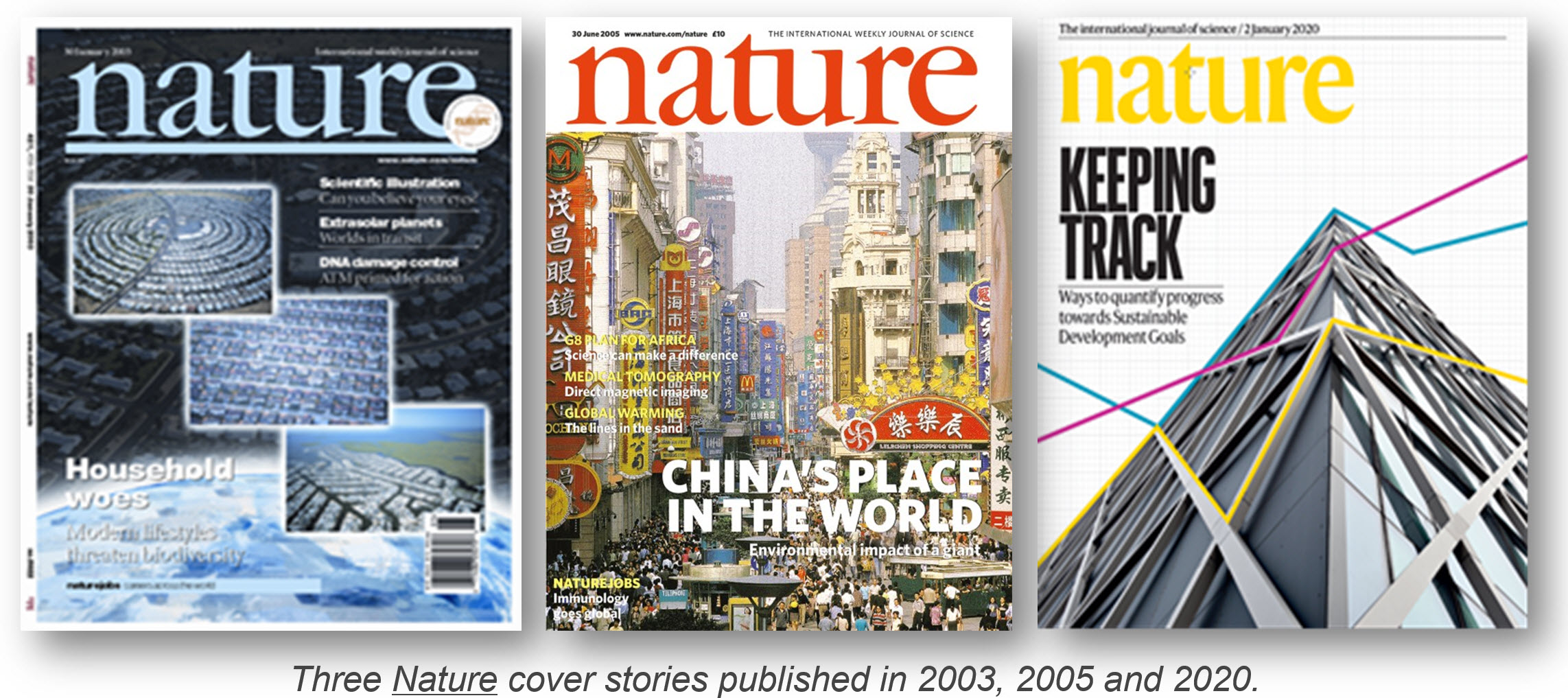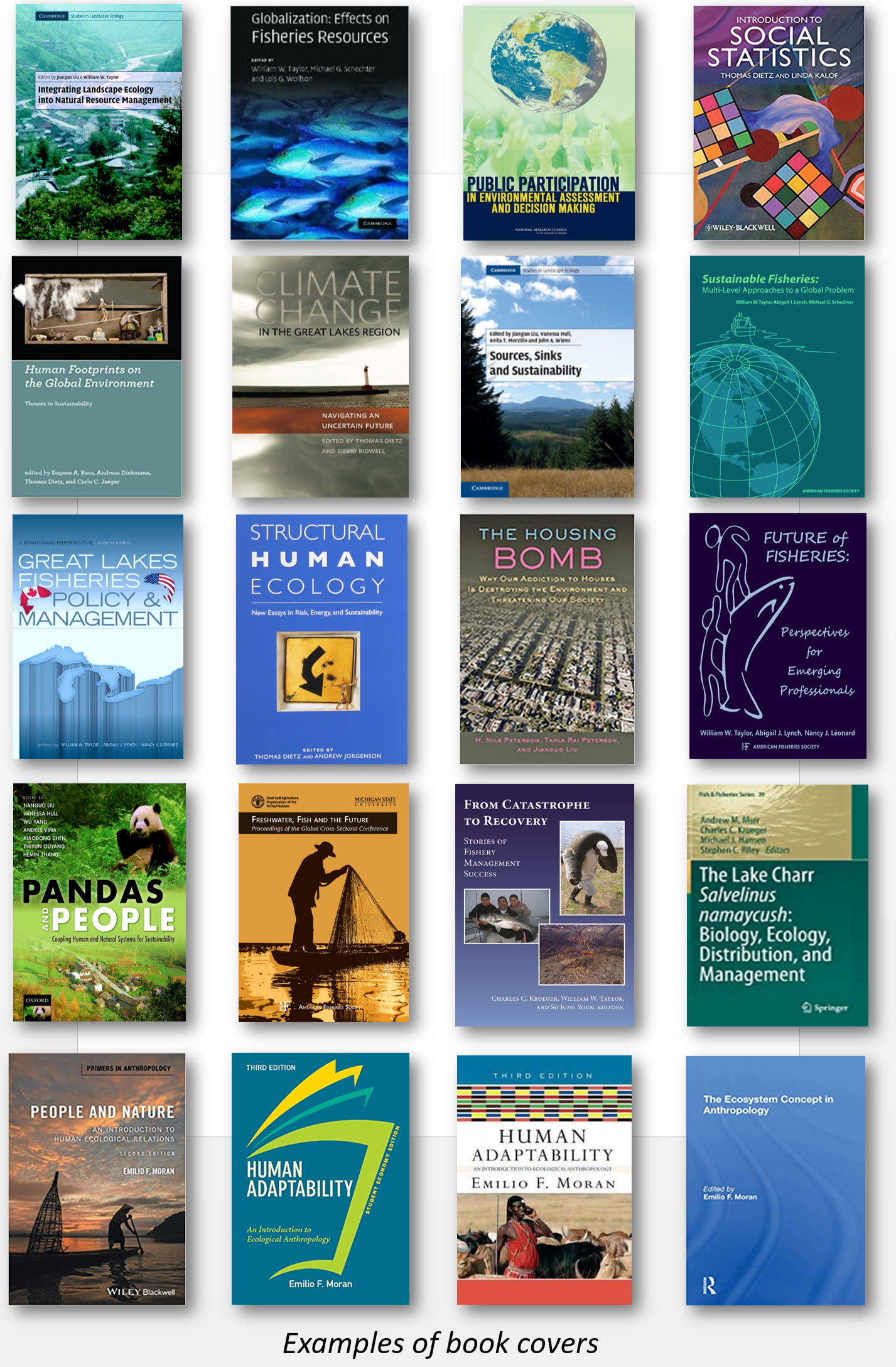Publications
Journal Articles
A list of journal articles published by CSIS members, including 3 cover stories in Nature, 24 appearances in Science, and 17 in PNAS (Proceedings of the National Academy of Sciences of the United States of America).
Books and Book Chapters
Selected books (edited books) and book chapters published by CSIS members.
Publications
-
SUSTAINABILITY - Sustainability Evaluation on the Grain to Green Program in the Hexi Corridor of China: A Metacoupled System Perspective
Published on February 1, 2021
Establishing a metacoupled model to quantitatively evaluate aspects of ecosystem sustainability in China, providing insight to the theory and application of sustainability science. -
FRONTIERS OF ECOLOGY AND THE ENVIRONMENT - Macrosystems as metacoupled human and natural systems
Published on February 1, 2021
In other words, all that’s local is a lot more global, and the scientists say solutions can only be found through broader views and collaborations nearby and far away. -
FRONTIERS OF ECOLOGY AND THE ENVIRONMENT - The evolution of macrosystems biology
Published on February 1, 2021
Analyses indicates that macrosystems biology emphasizes large scales, has deep roots in ecological disciplines, and may emerge as a new research frontier, but this last point has yet to be proven. -
SCIENCE OF THE TOTAL ENVIRONMENT - Spatial variation and influencing factors of the effectiveness of afforestation in China's Loess Plateau
Published on January 29, 2021
Results suggest ways to improve af- forestation design and implementation. -
AMBIO - Recognize fish as food in policy discourse and development funding
Published on January 18, 2021
The paper argues for viewing fish from a food systems perspective to broaden the conversation on food and nutrition security and equity -
SCIENCE OF THE TOTAL ENVIRONMENT - Synergies and tradeoffs among Sustainable Development Goals across boundaries in a metacoupled world
Published on January 10, 2021
Introduced a new theoretical framework and develop a general procedure of applying the framework to empirically evaluate SDG synergies and tradeoffs within and across boundaries, based on the concept of metacoupling. -
FRONTIERS IN MARINE SCIENCE - Spatial Management Measures Alter Vessel Behavior in the Aleutian Archipelago
Published on January 7, 2021
Scientists find out if ships honored areas to be avoided (ATBAs) -
BIOLOGICAL CONSERVATION - The hidden risk of using umbrella species as conservation surrogates
Published on December 3, 2020
Doubt is cast on the long-held hope that the conservation protections granted pandas and other adored threatened species extended to their wildlife neighbors, calling for broader conservation efforts. -
Acta Geographica Sinica - 人类世可持续发展背景下的远程耦合框架及其应用
Published on November 25, 2020
地理学报 第75卷 第11期 -
NATURE COMMUNICATIONS - Impacts of irrigated agriculture on food-energy-water-CO2 nexus across 2 metacoupled systems
Published on November 17, 2020
Understanding irrigated agriculture's impact on the food-energy-water-CO2 nexus -
INTERNATIONAL ENCYCLOPEDIA OF GEOGRAPHY -- Telecoupling
Published on October 29, 2020
The telecoupling entry gives background on the concept, illustrates the framework that helps understand telecoupling, and provides example applications of the concept and framework -
SCIENTIFIC REPORTS - The spatial and temporal dynamics of global meat trade networks
Published on October 7, 2020
Researchers combined network modeling and cluster analysis to simultaneously identify the structural changes in meat trade networks and the factors that influence the networks themselves -
SUSTAINABILITY - Metacoupled Tourism and Wildlife Translocations Affect Synergies and Trade-offs among Sustainable Development Goals across Spillover Systems
Published on September 17, 2020
We used a new integrated framework to guide SDG synergy and trade-off analysis within and across systems, as influenced by cross-boundary tourism and wildlife translocations. -
Beef Production in the Southwestern United States: Strategies Toward Sustainability
Published on September 17, 2020
From grazing lands to meat packing, beef production systems in the United States are striving to meet global demands without compromising environmental quality or local profitability. These challenges and opportunities are manifest in four US regions... -
SCIENCE OF THE TOTAL ENVIRONMENT - Synergies and tradeoffs among Sustainable Development Goals across boundaries in a metacoupled world
Published on September 3, 2020
Understanding SDG synergies and tradeoffs across spatial/administrative boundaries using the metacoupling framework using tourism and panda loans as an example. -
SCIENCE - China and India: Toward a sustainable world
Published on July 31, 2020
In Letters, an international group of scientists advocate the two countries opt for diplomacy to place sustainability before political tensions -
JOURNAL OF APPLIED ECOLOGY - Working with Indigenous and local knowledge In large‐scale ecological assessments
Published on July 27, 2020
We review and reflect on how the GA worked with Indigenous and local knowledge and lessons learned. -
ECOLOGICAL MODELLING - Improving species distribution model predictive accuracy using species abundance: Application with boosted regression trees
Published on July 24, 2020
Insights into the applicability of using weighted approaches with other commonly used species distribution modeling methods. -
NATURE SUSTAINABILITY -- Impacts of International Trade on Achieving Global Sustainable Development Goals
Published on July 13, 2020
International trade positively affected global progress towards seven environment-related SDGs. International trade improved SDG scores of most evaluated developed countries but reduced the SDG scores of over 60% of the evaluated developing countries -
PEOPLE AND NATURE - Levers and leverage points to sustainability
Published on July 1, 2020
Applying a social–ecological systems lens, we identified eight priority points for intervention (leverage points) and five overarching strategic actions and priority interventions (levers), which appear to be key to societal transformation





 Print
Print Email
Email